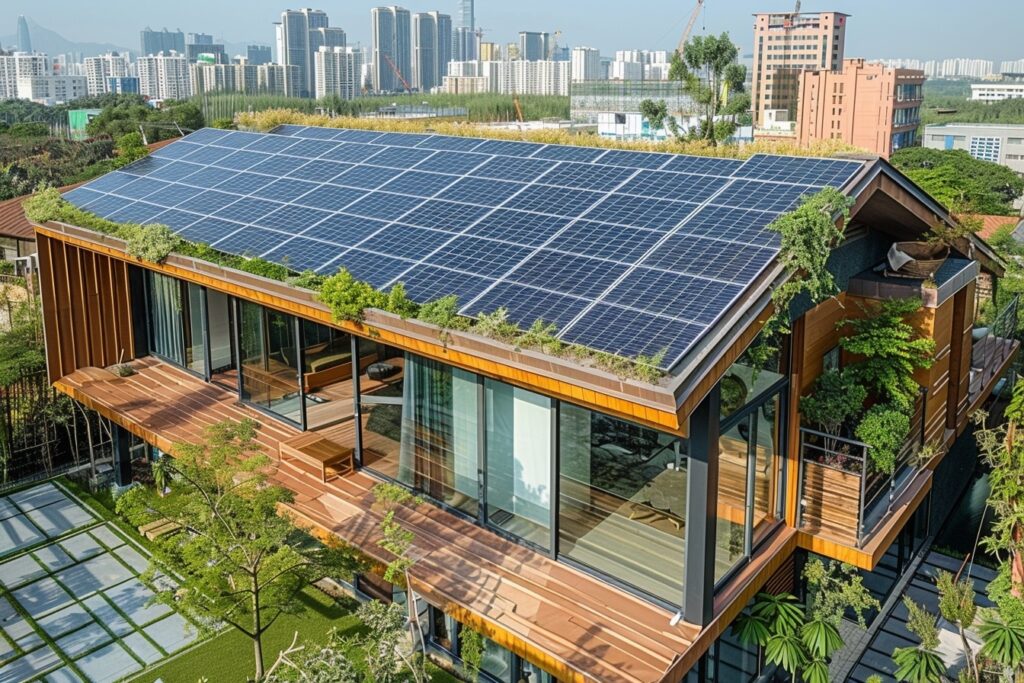
Green Building Materials List: Comprehensive Guide for Home Enthusiasts
In today’s world, focusing on sustainable living and eco-friendly construction is more important than ever. Home enthusiasts are turning towards green building materials to create environmentally conscious and energy-efficient homes. This comprehensive guide will delve into the various materials that are making waves in the construction industry and why they are significant.

Understanding Green Building Materials
Green building materials are those that enhance the sustainability of a structure, reduce its carbon footprint, and contribute to a healthier environment. They are chosen for their durability, recyclability, and minimal negative impact on the environment.
Why Choose Green Building Materials?
Choosing green building materials is not only beneficial for the environment but also offers several advantages to homeowners. These materials can improve indoor air quality, reduce energy bills, and increase the lifespan of a home.
Categories of Green Building Materials
There are various categories of green building materials which include wood, metal, and composites that are used for different purposes in construction.
Sustainable Wood
Wood is a classic building material that, when sourced responsibly, can be very sustainable. Products like bamboo are fast-growing and can be harvested without causing deforestation.
Recycled Metal
Metal can be recycled indefinitely without losing its properties. Using recycled metal reduces the need for mining, which is energy-intensive and environmentally damaging.
Composite Materials
Composite materials are made from two or more constituent materials with significantly different physical or chemical properties. They offer the advantage of being lightweight and durable.
Innovative Green Building Materials
Innovation in the field of green building materials is constantly evolving, allowing for more eco-friendly options.
Rammed Earth
Rammed earth is a technique where natural raw materials like earth, chalk, lime, or gravel are compacted to form walls. It is incredibly durable and offers excellent thermal mass.
Insulated Concrete Forms (ICFs)
ICFs are a system of formwork for reinforced concrete usually made with a rigid thermal insulation. They stay in place as a permanent part of the wall assembly.
Structural Insulated Panels (SIPs)
SIPs are a high-performance building system for residential and light commercial construction. They consist of an insulating foam core sandwiched between two structural facings.
Benefits of Using Green Building Materials
The benefits of using green building materials are manifold. They contribute to energy efficiency, improve air quality, and provide a healthier living environment.
Energy Efficiency
One of the primary benefits of green building materials is their energy efficiency. Materials like low-E glass and advanced insulation can significantly reduce energy consumption.
Improved Air Quality
Many green building materials emit little to no volatile organic compounds (VOCs), which are harmful to indoor air quality. This leads to a healthier living environment.
Durability and Longevity
Green building materials are known for their durability and longevity. They can withstand the test of time, reducing the need for frequent replacements.
Challenges in Adopting Green Building Materials
While the benefits are clear, there are challenges in adopting green building materials. These include higher upfront costs and a lack of awareness among consumers.
Cost Considerations
Green building materials can be more expensive initially. However, their long-term savings on energy and maintenance often outweigh the upfront costs.
Lack of Awareness
Many consumers are still unaware of the benefits of green building materials. Educating homeowners about these benefits can increase adoption rates.
Future of Green Building Materials
The future of green building materials looks promising, with continuous innovations and increased adoption by construction companies and homeowners alike.
Technological Advancements
Technological advancements are leading to the development of new, more efficient green building materials. These innovations promise to make homes even more sustainable.
Increased Adoption
As awareness grows, more homeowners and builders are opting for green building materials. This trend is likely to continue as environmental concerns become more pressing.
Conclusion
Incorporating green building materials into your home construction or renovation is not just a trend but a necessity for a sustainable future. By choosing these materials, you are contributing to a healthier environment and a better quality of life.

FAQs
What are green building materials?
Green building materials are materials that are environmentally responsible and resource-efficient throughout a building’s life-cycle.
Why are green building materials important?
They are important because they reduce the environmental impact of construction and improve the quality of life for occupants.
How can I find green building materials?
Many suppliers and manufacturers offer green building materials. It’s important to research and ensure they are certified by recognized environmental standards.
For more information, consider visiting UN Habitat for comprehensive insights into sustainable housing practices.
Additionally, explore affordable housing designs and housing success stories on The Good Home for more inspiration.
This article contains affiliate links. We may earn a commission at no extra cost to you.